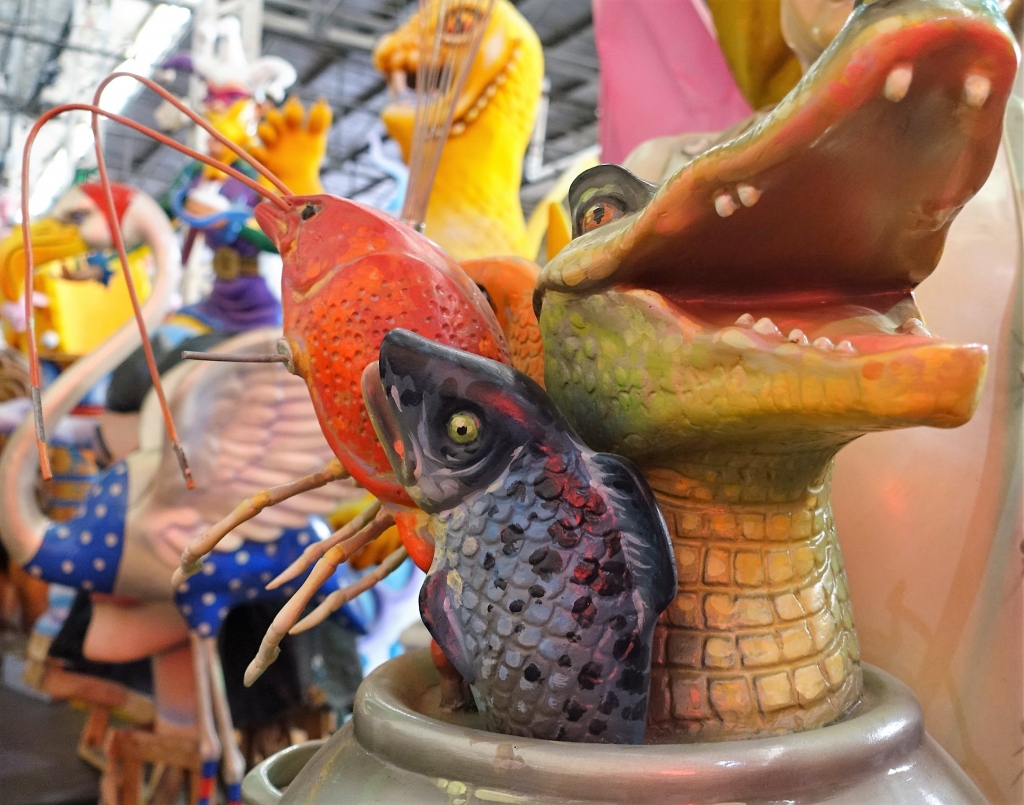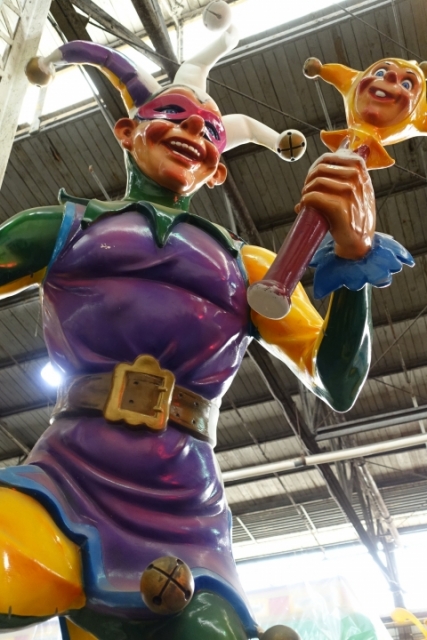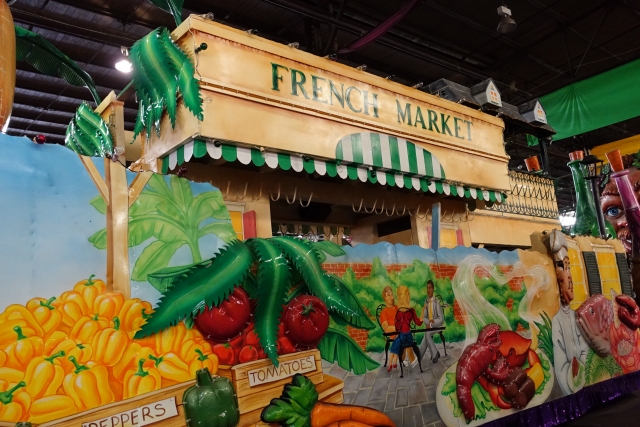This is a guest post by Susan Guillory of The Unexplorer.
If you’re like many (myself included, despite my Cajun heritage), when you think of Mardi Gras, you think of drunken debauchery and crowds in the French Quarter of New Orleans. On a recent trip to The Crescent City, my eyes were opened to what Mardi Gras really is: two weeks of revelry for every audience: from tiny tots who watch parades in the suburbs from atop ladders turned into chairs to those drunken youngsters in the Quarter, many of whom are visitors.

Bacchus float at Mardi Gras World. Photo © 2016 Susan Payton
But the Mardi Gras of today would be nothing without one family: the Kern family. What were once simple horse-drawn cart floats became visions of fantasy when artist Blaine Kern began designing parade floats in 1947. Since then, he has built an empire that the Mardi Gras industry relies heavily on, as well as the global entertainment industry. Blaine Studios designs floats and props for Euro Disney, Chik-fil-A, and Universal Studios, to name a few, and now there are four generations of Kerns who have expanded the company’s operations.
It’s a Mardi Gras World


A Cajun medley. Photo © 2016 Susan Payton
On my recent visit, the New Orleans Convention & Visitors Bureau provided me and my husband with complimentary tickets to Mardi Gras World. Oh. My. God. Think of Disneyland and take away the rides and the crowds, but leave the magic and fantasy. Mardi Gras World is an actual working studio where about 25 artists imagine, design, and then create all the floats that the major krewes (think: nonprofit organization that puts on a parade) need for Mardi Gras each year. That totals about 40 parades…and sometimes up to 80 floats per parade! It’s a ton of work, but man, the quality is amazing.


Jester prop. Photo © 2016 Susan Payton
The props (the heads or other artistic bits that will go on a float) are primarily made of fiberglass or Styrofoam. It’s fascinating how they do it:
- First, they get the theme for the parade from the krewe and start sketching on the computer.
- Then, they project the image onto a large (3+ feet tall) piece of Styrofoam and sketch it.
- They cut out the shape, then glue additional pieces in the same shape on top of each other until they have a large, thick shape.
- They then use a knife, hot knife, or other tools to carve a 3-D image.
- After that, they add papier mache to smooth out the prop and paint it.
- When it’s ready, they add it to a float. Voila!
We learned from our tour guide that they do reuse many of the figures, but add to them to make them new. That explains why the studio is jam packed with jesters, queens, fairies, demons, and movie characters.
Perfect Timing


This year, Mardi Gras is early on February 9. There are two weeks of parades before the actual day, so the floats we saw on our tour will actually be the floats that grace the streets of New Orleans in a few weeks. I’d love to see them in action, especially now that I know Mardi Gras isn’t all drunk college kids and women flashing themselves for beads!
Our tour guide also told us that to be a member of one of the prominent Krewes, you must pay dues of around $1,500, which doesn’t include the cost to have your intricate costume designed, nor the cost of the thousands of beads you’ll throw from the float. All in, it seems like it would easily cost $5,000 a year to really have a good time.


I went to Mardi Gras in college, and have always said, “Well, I did it once. I don’t have to do it again.” But after this experience, I plan to return and check out family-friendly parades. After all, I’ve seen the behind-the-scenes. Now I want to see the front-of-house!
Insider Tip: If you happen to take the Hop On Hop Off Bus Tour around New Orleans, Mardi Gras World is a stop, so plan to get off the bus for a few hours. Otherwise, there is a free shuttle you can take.

Pingback: Old No 77 Hotel: Affordable New Orleans Luxury | Nancy D Brown